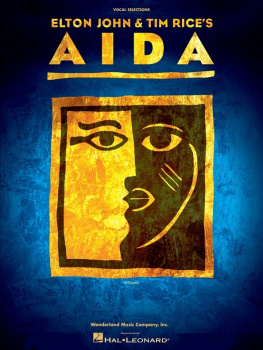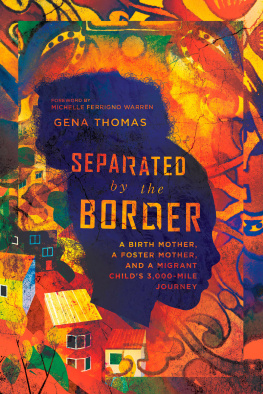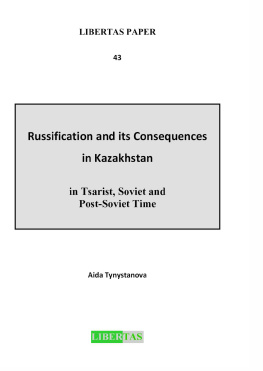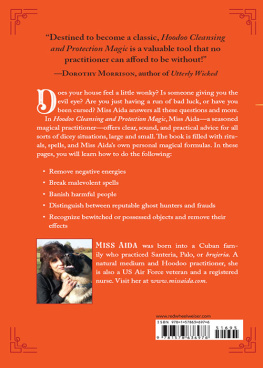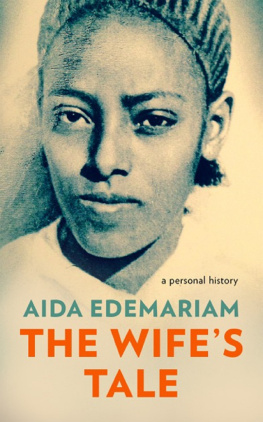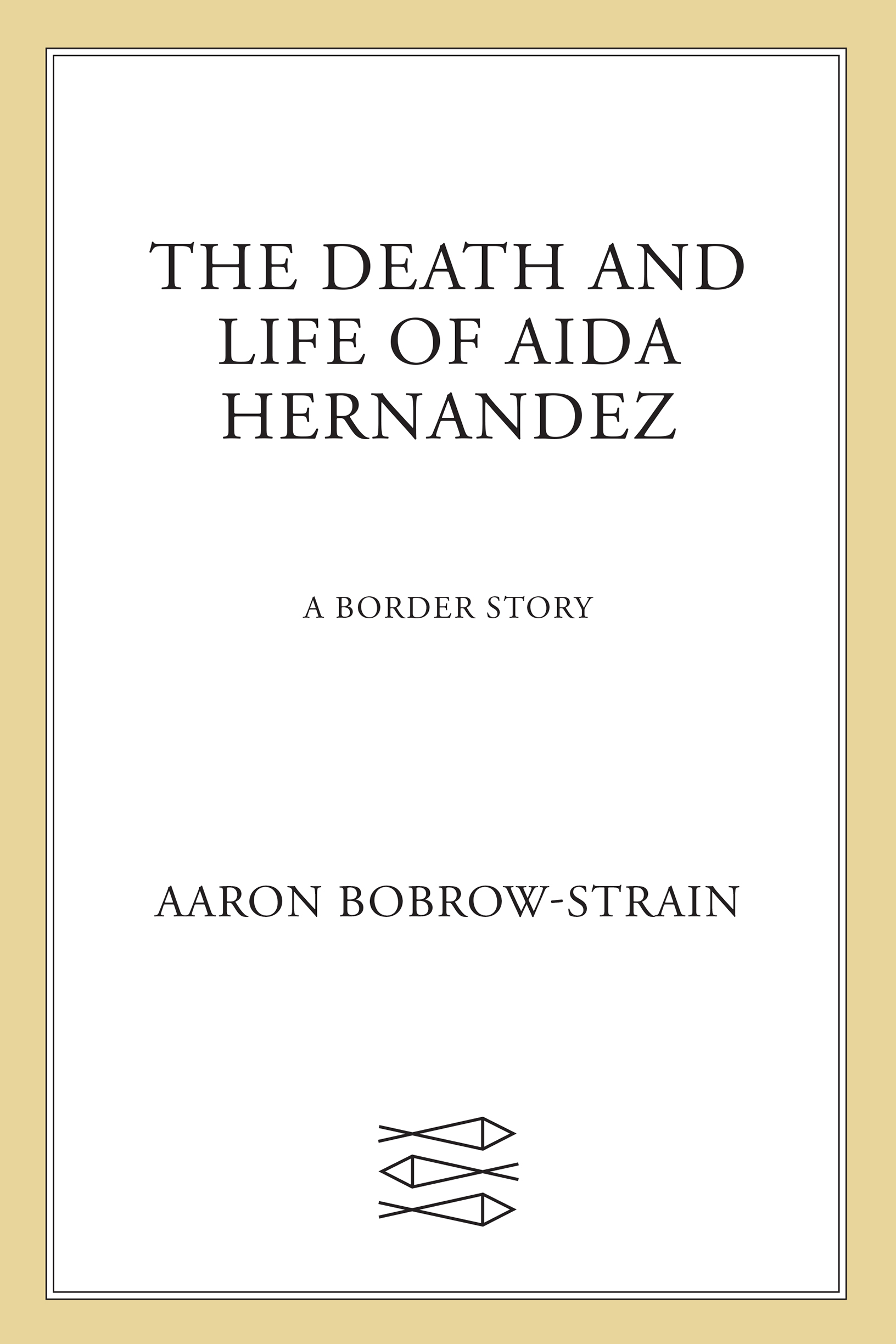The author and publisher have provided this e-book to you for your personal use only. You may not make this e-book publicly available in any way. Copyright infringement is against the law. If you believe the copy of this e-book you are reading infringes on the authors copyright, please notify the publisher at: us.macmillanusa.com/piracy.
This is a work of nonfiction, based primarily on memories shared by Aida Hernandez, her family, and her friends. When possible, these memories have been cross-checked and corroborated with additional interviews, as well as medical, police, school, court, immigration, and other records. News reports, scholarly publications, government documents, and other data sources consulted in the research process are cited in endnotes. In some cases, dialogue was recorded as it occurred; more often, it was reconstructed from the memories of participants. Many names have been changed. A section at the end of the book, titled About This Book, addresses these and other methodological, political, and ethical questions in depth. Proceeds from the sale of the book will be split equally among the author, Aida Hernandez, and the Chiricahua Community Health Centers to support services for people dealing with domestic violence or sexual assault.
AUGUST 10, 2008
Camila looked down at Aidas wrecked body and couldnt see a trace of the cousin she remembered from childhood. Years earlier, when she was a girl living in Douglas, Arizona, Camila would cross the border into Mexico almost every weekend to play with Aida and her sisters. They ruled a gravelly playground near Aidas house in Agua Prieta. They ran free at an uncles ranch on the outskirts of town. Aida had been the silly, sunlit one. The cousin with the dimpled cheeks and enviable curls.
That girl was almost stubbed out. Her face was swollen, her lips pallid. Matted blood crusted on her bandaged arms. Newer blood soak painted moist shapes on the sheet covering her gashes. A tube stitched into her abdomen leaked sticky pink liquid.
Aida tried to smile up at her cousin.
Its okay, Camila said. Just lie still. But Aida twisted on the ambulance gurney, staring up through tubes and leads.
Youre going to be okay, Camila repeated. She didnt know what else to tell her childhood playmate, now twenty and a mother, dying beside her.
The ambulance rattled through Agua Prieta, heading for the border. Camila had not seen much of her cousin in recent years. Camila was determined to stay out of trouble. She wanted to finish school and be a teacher in Douglas, just across the international line from Agua Prieta.
The ambulance jolted over a break in the pavement and Aida shrieked. She had fought to live all day. Shed staggered through the ER doors just before dawn on her own power. Shed survived surgery and conferred with police. Im all right, shed reassured her mother in Arizona by telephone. Stay there. Ill be fine. Dont try to cross the border.
When a nurse tried to adjust her sheet, Aida had bolted upright to fight against it. Shed been stabbed so many times that she thought the nurse was pulling a shroud over her head.
Im not dead, shed yelled over and over.
Around noon, her father, unable to pay for the private hospital and despairing over the level of care in Mexico, arranged an ambulance to take Aida north. Theyd try their luck finding care in Arizona. One last chance to save her life.
Camila had volunteered to accompany her cousin in the ambulance. Crossing the border would be easy for Camila. She was a U.S. citizen, but Aida was not. International agreements allowed residents of Agua Prieta to receive emergency care in the United States. But a lot could go wrong in the crossing, Camila thought.
The ambulance turned north onto Avenida 20. Behind it were the small Mexican border citys high-tech assembly factories, its tin-roofed houses, its broom- and brick-maker districts, and its pirate car lots selling luxury SUVs to the newly narco-wealthy. Ahead lay Agua Prietas squat downtown, the steel border wall, and then Douglas.
The two towns had been so closely intertwined for so long that some people called them DouglaPrieta. Residents just a few years older than Camila and Aida remembered a time when kids played pickup baseball games spanning both sides of the line. Home plate, marked by a plastic bag, lay in a scrub field on the U.S. side, while Agua Prietas Calle Internacional formed the outfield. On a day-to-day basis, adults from both countries had scrambled across the ditch or ducked through a ragged chain-link fence to run errands and visit family on the other side. They mingled north to south, and south to north. Longer-term migration followed predictable cycles: the same people crossing the U.S. border at the same point in the same season to tend crops on the same farms. When the season finished, they returned home to Mexico. Year after year.
But in this summer of 2008, the towns werent as close as they had once been. New policies, new people, new suspicions, and new border crackdowns had pushed a wedge between them.
Avenida 20 was a paved boulevard, so the ambulance picked up speed. It rushed through Agua Prietas city center past cowboy boot emporiums, dentist offices, and pharmacies catering to American retirees. In the distance sprawled clubs and bars where preppy Mexican teens, Douglas High School students, and drug dealers had partied together behind mirrored glass the night before.
Camila looked from the ambulance window to her cousin.
Were almost there, she said. The ambulance had gone as far north as it could and turned west onto Calle Internacional. From there it raced along the international line itself. To the right, rusting steel bars blurred bythe latest border wall.
AIDAS FATHER, RAL, followed the ambulance in a battered pickup loaded with family. He pulled as close to the port of entry as the queue of cars waiting to cross allowed. Ral had seen his closest friends die in pitched gunfights, and he himself had survived torture in Mexicos most infamous political prison. He knew that when it was time to act, you did everything you could do, and then you did a little more. When hed rushed to the hospital just after dawn that morning, hed grabbed the deed to his house. Even in his panicked state, he knew that hed need it as collateral for his daughters hospital bills. When it came to such details, Ral liked to get it right. And now his girl was dying. His sunlit girl.
He and his daughter had clashed the night before. Theyd screamed and yelled, rattling the wood paneling on his cinder-block walls. In the end, shed stormed out. The twenty dollars she hoped to earn that night was her future, shed shouted at hima step toward reuniting with her son. At the hospital afterward, Aida had made sure that her sister recovered the cursed twenty-dollar bill, folded in the pocket of her sliced-off jeans. Now Ral watched her ambulance pull into an emergency lane on its way to the United States.
FRANCISCO FRANK HONE also watched, waiting on the Arizona side as the ambulance exited Mexico and turned in to the crowded border crossing. A Douglas Fire Department veteran, Frank had overseen dozens of emergency transfers across the international line. He knew the drill: the Agua Prieta ambulance driver pulls into an express lane, unloads the patient, and makes a quick stop for Customs and Border Protection clearance. Then Frank wheels the patient toward his waiting rig. This takes place in what looks like a highway toll plaza at rush houralbeit one bristling with cameras, dogs, X-ray apparatus, and automatic weapons. It was routine, unless something went wrong.



